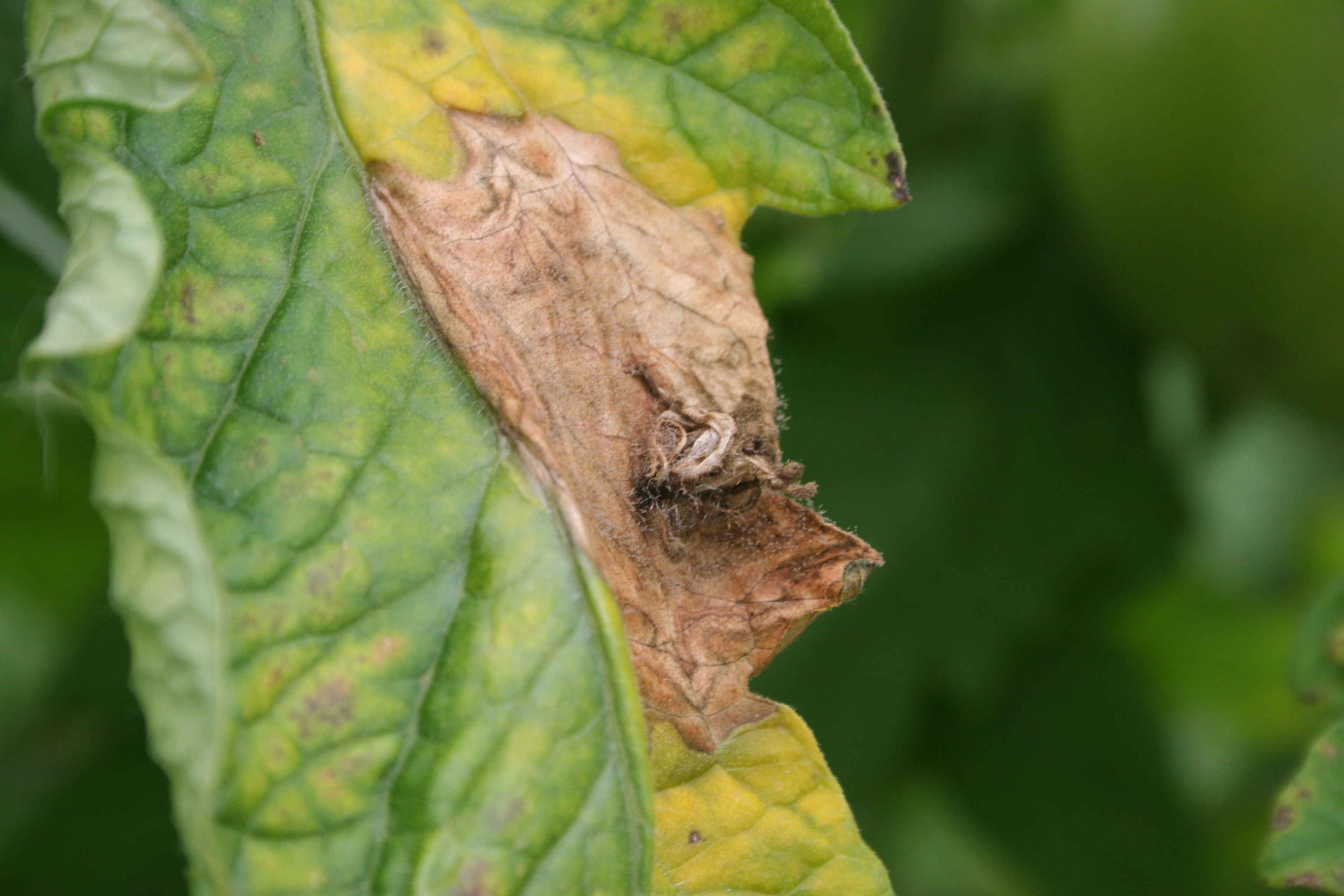Gray Mold
Return to Diseases
Gray mold (Botrytis spp.) occurs in structures with prolonged high humidity. This disease typically affects injured tissue and debris first, then spreads into the actively growing crop, including leaves, stems, and fruit. Lesions are tan-tobrown; abundant masses of gray spores form on the surface of diseased tissues. In advanced cases, overwintering structures called sclerotia may also develop. The gray mold pathogen has a very wide host range and can infect most vegetable crops and ornamentals.
Botrytis gray mold fungus sporulating on tomato
leaf and spent blossom.
(Photo: Emily Pfeufer, University of Kentucky)

Botrytis gray mold fungus on tomato leaf.
(Photo: Emily Pfeufer, University of Kentucky)
Botrytis gray mold fungus on tomato stem.
(Photo: Emily Pfeufer, University of Kentucky)
Botrytis gray mold fungus on lettuce stem.
(Photo: Kenneth Seebold, University of Kentucky)
Management:
- Reduce humidity by increasing air flow and eliminating standing water.
- Trellis plants carefully to avoid injuries.
- Remove fallen and diseased plant material from structures.
- Spray with a labeled fungicide on a regular schedule.
